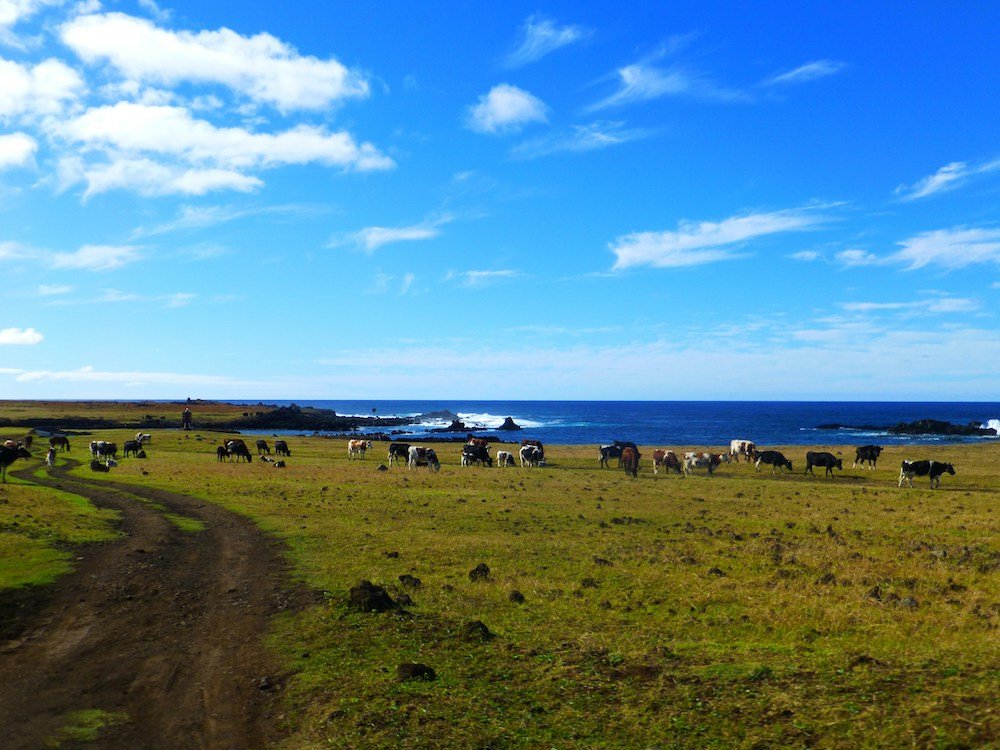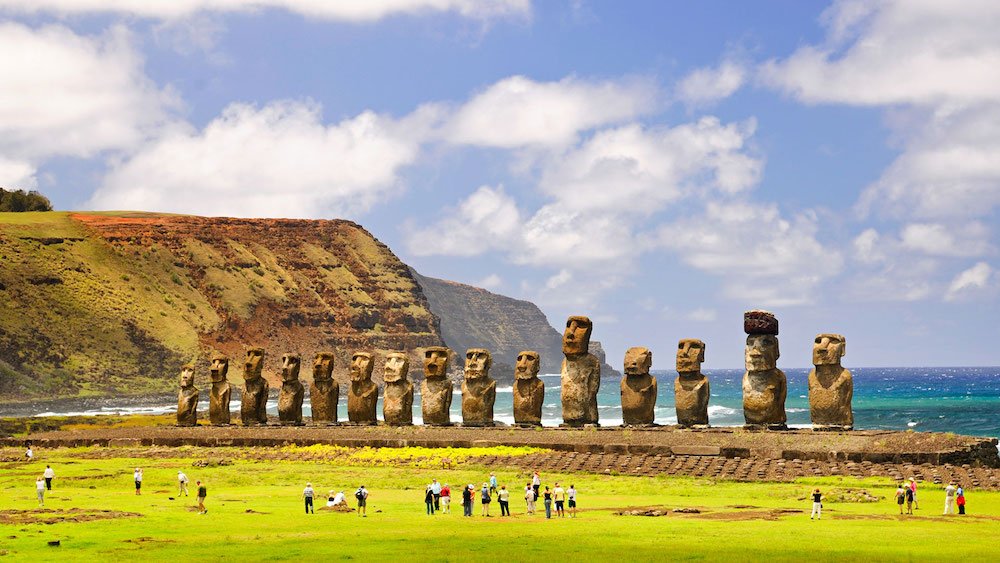
Easter Island, also known as Rapa Nui, is a remote volcanic island located in the southeastern Pacific Ocean. It is famous for its enigmatic stone statues, called Moai, which dot the island’s landscape.
With a surface area of just 63 square miles, Easter Island is one of the most isolated inhabited islands in the world, situated approximately 2,300 miles off the coast of Chile.
Easter Island holds a special allure for travelers worldwide due to its mysterious history, unique culture, and breathtaking landscapes.
The island’s iconic Moai statues, carved centuries ago by the Rapa Nui people, continue to captivate the imagination of visitors.
Beyond its archaeological wonders, Easter Island boasts pristine beaches, rugged coastlines, and diverse flora and fauna, making it a paradise for adventure seekers and nature enthusiasts alike.
The allure of Easter Island lies not only in its physical beauty but also in the opportunity to immerse oneself in a rich tapestry of history and culture.
Visitors can explore ancient archaeological sites, participate in traditional ceremonies, and engage with the welcoming local community.
Whether you’re drawn to the island’s archaeological wonders, natural splendor, or cultural heritage, Easter Island promises a truly unforgettable travel experience.
History of Easter Island

A. Origins of the Island and Its Inhabitants
Easter Island’s history traces back to its Polynesian settlement around 700-800 CE.
The island’s earliest settlers are believed to have migrated from other Polynesian islands, navigating the vast Pacific Ocean using traditional double-hulled canoes.
These pioneering settlers, known as the Rapa Nui people, established a thriving civilization on Easter Island, cultivating crops, constructing dwellings, and eventually carving the iconic Moai statues.
B. Moai Statues: Significance and History
One of the most fascinating aspects of Easter Island’s history is the construction and significance of the Moai statues.
Carved from volcanic rock, these colossal statues were created to honor ancestral chiefs and important figures within Rapa Nui society.
The Moai statues range in size, with some towering over 30 feet tall and weighing several tons.
The construction of the Moai statues is a testament to the ingenuity and craftsmanship of the Rapa Nui people.
Each statue was meticulously carved using stone tools and transported to various ceremonial platforms, known as Ahu, around the island.
The Moai statues not only served as representations of ancestral lineage but also as guardians protecting the island’s inhabitants.
C. European Contact and Subsequent Historical Events
Easter Island’s isolation came to an end with the arrival of European explorers in the 18th century.
Dutch explorer Jacob Roggeveen was the first European to encounter the island on Easter Sunday in 1722, hence its name.
Subsequent encounters with European explorers, traders, and missionaries had a profound impact on Rapa Nui society.
European contact brought diseases, conflict, and exploitation to Easter Island, leading to a decline in the island’s population and cultural upheaval.
The arrival of European settlers also led to the introduction of new technologies and ideas, further altering the dynamics of Rapa Nui society.
The history of Easter Island is a complex tapestry of triumphs and challenges, resilience and adaptation.
Despite the trials of colonization and cultural change, the spirit of the Rapa Nui people endures, and their legacy lives on through the enigmatic Moai statues and rich cultural heritage.
Planning Your Trip
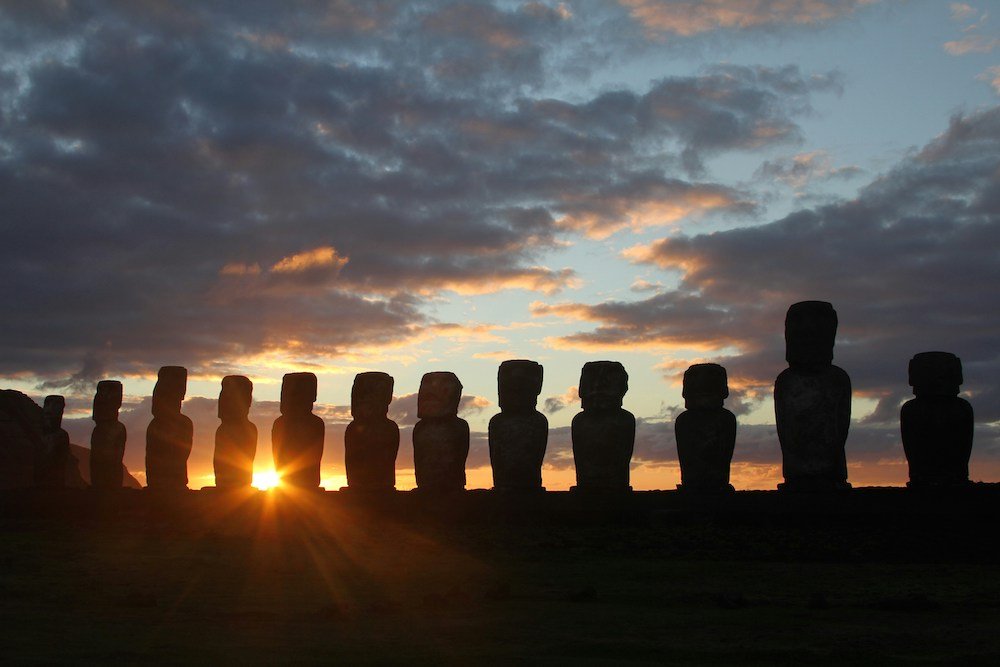
A. Best Time to Visit Easter Island
The best time to visit Easter Island is during the island’s dry season, which runs from April to October.
During this period, the weather is generally sunny and pleasant, making it ideal for exploring the island’s outdoor attractions and archaeological sites.
However, it’s essential to note that Easter Island experiences a subtropical climate with relatively mild temperatures year-round, so visiting outside the dry season is still feasible.
B. How to Get to Easter Island
Easter Island is accessible by air, with regular flights departing from Santiago, Chile.
The Mataveri International Airport on Easter Island is the main gateway for travelers arriving from mainland Chile.
Airlines such as LATAM and Sky Airline operate flights to Easter Island, with the journey taking approximately five to six hours from Santiago.
It’s advisable to book flights well in advance, especially during peak travel seasons, to secure the best deals and availability.
C. Visa Requirements and Travel Restrictions
Travelers visiting Easter Island as part of Chilean territory do not require a separate visa if they hold a valid Chilean tourist visa or are visa-exempt.
However, it’s essential to check the latest visa requirements and travel restrictions, as entry regulations may vary depending on your nationality and any recent changes in immigration policies.
D. Accommodation Options on Easter Island
Easter Island offers a range of accommodation options to suit every traveler’s preference and budget.
From luxury resorts and boutique hotels to guesthouses and hostels, there’s something for everyone on the island.
Most accommodations are concentrated in the main town of Hanga Roa, offering convenient access to restaurants, shops, and tourist attractions.
It’s advisable to book accommodation well in advance, especially during the peak tourist season, to secure your preferred choice and avoid disappointment.
Many accommodations on Easter Island offer unique cultural experiences, such as traditional Rapa Nui hospitality and guided tours, enhancing your overall travel experience.
Exploring Easter Island
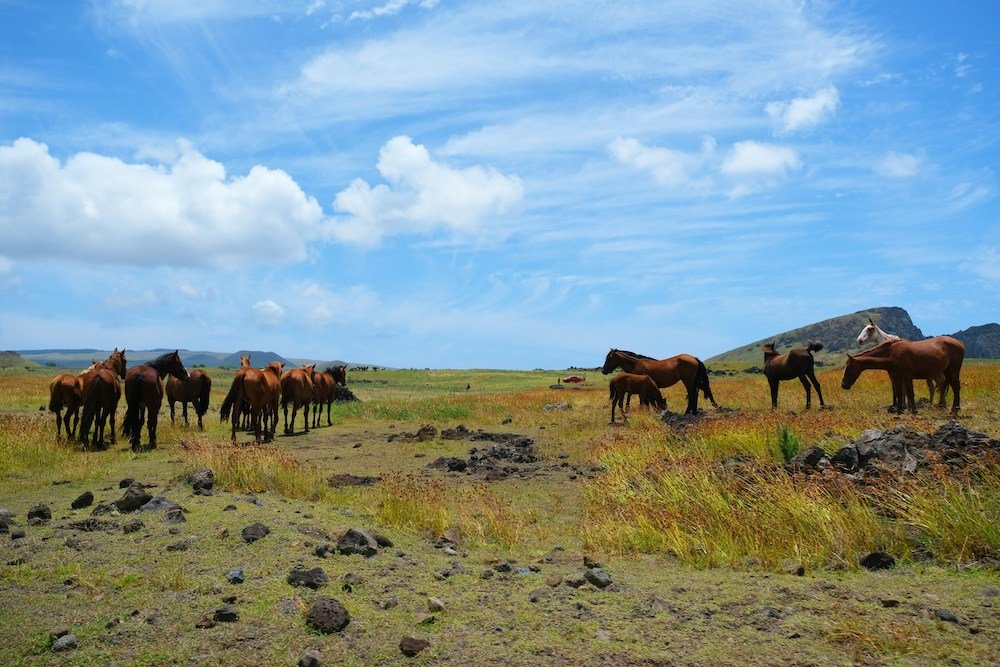
A. Top Attractions and Must-See Sites
1. Rano Raraku Quarry
Rano Raraku Quarry is the birthplace of the iconic Moai statues and a UNESCO World Heritage Site.
Here, visitors can witness the fascinating process of Moai production, with numerous statues in various stages of completion scattered across the volcanic landscape.
2. Ahu Tongariki
Ahu Tongariki is one of the most impressive archaeological sites on Easter Island, featuring a row of 15 towering Moai statues set against the backdrop of the Pacific Ocean.
This sacred site offers breathtaking panoramic views and a glimpse into the island’s ancient past.
3. Orongo Ceremonial Village
Perched on the rim of the Rano Kau volcano, Orongo Ceremonial Village is a historic site of great cultural significance.
It was the center of the annual Birdman competition, where contestants would compete in a daring ritual to obtain the first egg laid by the Manutara bird.
4. Anakena Beach
Anakena Beach is a picturesque paradise known for its pristine white sands, crystal-clear waters, and palm-lined shores.
It is also home to two significant archaeological sites, Ahu Nau Nau and Ahu Ature Huki, featuring restored Moai statues and ceremonial platforms.
5. Ahu Akivi
Ahu Akivi is a unique archaeological site featuring seven Moai statues facing the ocean.
Unlike other Moai sites on the island, Ahu Akivi is situated inland and is believed to have astronomical significance, aligning with the equinoxes and solstices.
B. Activities and Experiences
1. Hiking and Trekking Opportunities
Easter Island offers a variety of hiking and trekking trails, allowing visitors to explore the island’s rugged terrain and natural beauty.
Popular hiking destinations include the volcanic crater of Rano Kau, the coastal cliffs of Poike Peninsula, and the scenic trails of Parque Nacional Rapa Nui.
2. Scuba Diving and Snorkeling
Explore the vibrant underwater world surrounding Easter Island through scuba diving and snorkeling excursions.
Dive sites around the island offer opportunities to encounter colorful coral reefs, tropical fish, and even the occasional encounter with sea turtles and dolphins.
3. Cultural Experiences and Local Cuisine
Immerse yourself in Rapa Nui culture by participating in traditional ceremonies, learning about ancient customs, and sampling authentic local cuisine.
From fresh seafood delicacies to traditional Polynesian dishes, Easter Island offers a diverse culinary experience influenced by its rich cultural heritage.
4. Birdwatching and Wildlife Encounters
Easter Island is home to a variety of bird species, including nesting seabirds, migratory birds, and endemic species such as the Rapa Nui petrel.
Birdwatching enthusiasts can explore coastal cliffs, volcanic craters, and inland forests to observe a diverse array of avian wildlife in their natural habitat.
Understanding the Culture
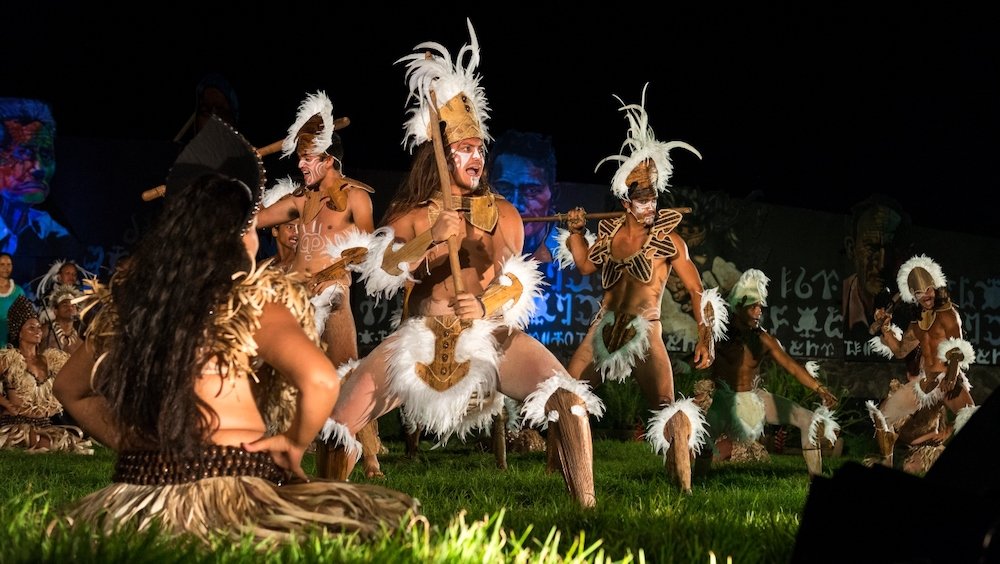
A. Rapa Nui Culture and Traditions
The culture of Easter Island, known as Rapa Nui culture, is deeply rooted in the island’s Polynesian heritage and the traditions of its indigenous inhabitants.
Central to Rapa Nui culture is a reverence for nature, ancestral spirits, and the sacred connection between the land and its people.
Traditional customs, rituals, and storytelling play a significant role in preserving the island’s cultural identity and passing down ancestral knowledge through generations.
B. Language and Customs
The primary language spoken on Easter Island is Rapa Nui, a Polynesian language closely related to Tahitian and Hawaiian.
While Spanish is also widely spoken due to Chilean influence, learning a few basic phrases in Rapa Nui can enhance your interactions with locals and demonstrate respect for their culture and heritage.
Easter Island has its own unique customs and traditions, many of which are centered around communal gatherings, feasting, and ceremonial rituals.
Visitors are encouraged to observe and respect local customs, such as asking for permission before entering sacred sites and participating in traditional ceremonies with humility and reverence.
C. Interaction with Locals and Respectful Behavior
Interacting with locals on Easter Island provides valuable insights into Rapa Nui culture and fosters meaningful connections with the island’s residents.
Whether engaging in conversation with shopkeepers, dining at local restaurants, or attending cultural events, it’s important to approach interactions with respect, openness, and a genuine interest in learning about the island and its people.
Respectful behavior towards locals includes adhering to cultural norms, such as greeting others with a friendly “Iorana” (hello) or “Manuia” (cheers), and showing appreciation for their hospitality and generosity.
Additionally, practicing responsible tourism by minimizing your environmental impact, supporting local businesses, and contributing positively to the community helps preserve the island’s cultural heritage for future generations to enjoy.
Practical Tips for Visitors
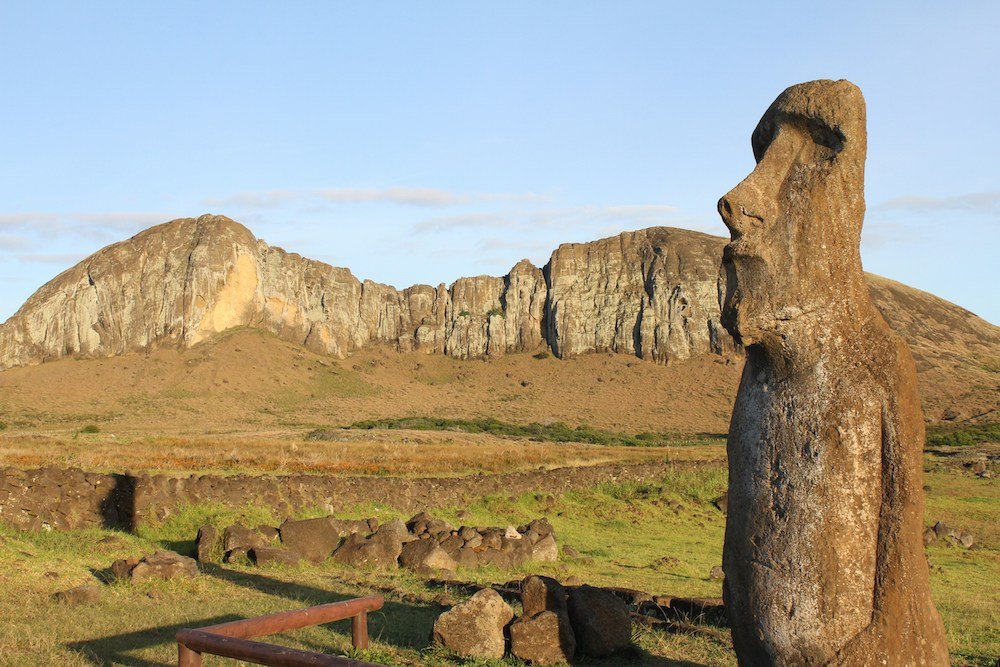
A. Safety Precautions and Health Considerations
While Easter Island is generally safe for visitors, it’s essential to take precautions to ensure a safe and enjoyable trip.
Be mindful of your surroundings, especially when exploring remote areas or engaging in outdoor activities.
Stay hydrated, protect yourself from the sun with sunscreen and appropriate clothing, and be aware of potential hazards such as rough seas and uneven terrain.
Ensure you have adequate travel insurance coverage that includes medical evacuation in case of emergencies.
While medical facilities are available on the island, they may be limited in scope, so it’s advisable to bring any necessary medications and medical supplies with you.
B. Packing Essentials for a Trip to Easter Island
When packing for your trip to Easter Island, consider the following essentials:
- Lightweight, breathable clothing suitable for warm weather
- Sun protection items such as sunscreen, sunglasses, and wide-brimmed hats
- Comfortable walking shoes or hiking boots for exploring the island’s terrain
- Insect repellent to protect against mosquitoes and other biting insects
- Reusable water bottle to stay hydrated while sightseeing
- Travel adapters and chargers for electronic devices
- Basic first aid kit with essential medications and supplies
- Waterproof bag or case to protect valuables and electronics during water activities
C. Transportation Options and Getting Around the Island
Easter Island offers various transportation options for getting around the island.
Rental cars, scooters, and bicycles are available for hire in Hanga Roa, providing flexibility and convenience for exploring the island at your own pace.
Alternatively, guided tours and shuttle services are available for those who prefer organized transportation and local insights into the island’s attractions.
For longer distances or visits to remote sites, consider hiring a local guide or joining a guided tour to ensure access to hidden gems and historical insights.
Many tour operators offer customizable itineraries and specialized excursions tailored to your interests and preferences.
D. Recommended Tour Operators and Guides
Choosing the right tour operator or guide can enhance your experience and provide valuable insights into Easter Island’s history, culture, and natural beauty.
Look for reputable tour companies with knowledgeable guides who are passionate about sharing the island’s stories and traditions.
Some recommended tour operators and guides on Easter Island include:
- Easter Island Travel
- Mahinatur Tours
- Rapa Nui Travel
- Explora Rapa Nui
Before booking a tour or guide, read reviews and testimonials from previous travelers to ensure quality service and authenticity.
Consider reaching out to local tourism offices or accommodations for recommendations and insider tips on the best tours and guides for your interests and budget.
Conservation Efforts and Sustainability
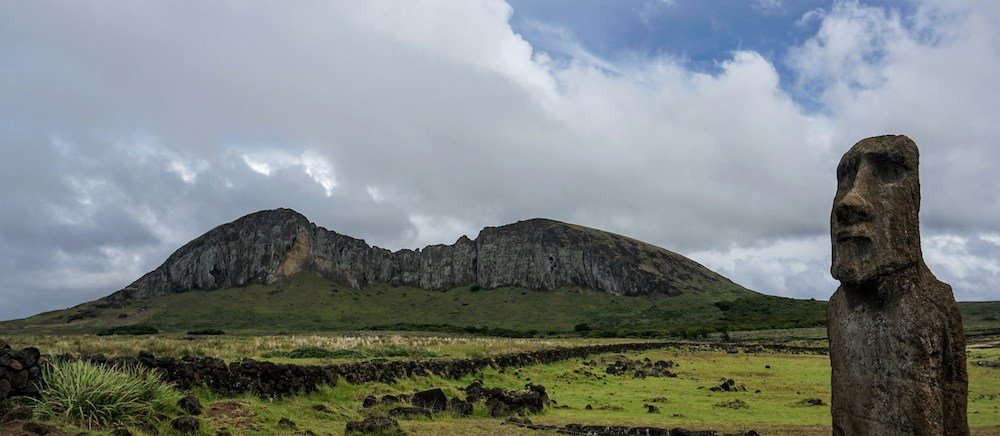
Easter Island faces several environmental challenges due to its remote location, fragile ecosystems, and increasing tourism activity.
Deforestation, soil erosion, and invasive species pose significant threats to the island’s biodiversity and natural resources.
Additionally, climate change and rising sea levels exacerbate coastal erosion and threaten cultural heritage sites along the shoreline.
To address these environmental challenges, various conservation initiatives and sustainable practices have been implemented on Easter Island.
Local authorities, non-profit organizations, and community groups work together to protect the island’s natural and cultural heritage through reforestation projects, waste management initiatives, and habitat restoration efforts.
Responsible tourism practices play a crucial role in minimizing the environmental impact of visitor activities on Easter Island.
Sustainable tourism initiatives focus on reducing carbon emissions, conserving water resources, and promoting eco-friendly transportation options such as cycling and walking tours.
Many accommodations and tour operators adhere to sustainability standards and support local conservation efforts through eco-friendly practices and community engagement.
Visitors can play a vital role in preserving Easter Island’s heritage by adopting responsible travel practices and supporting sustainable tourism initiatives.
Here are some ways visitors can contribute to conservation efforts:
- Respect cultural and natural heritage sites by following designated trails, avoiding littering, and refraining from touching or climbing on archaeological structures.
- Conserve water and energy by minimizing usage, opting for eco-friendly accommodations, and participating in local conservation programs.
- Support local businesses, artisans, and cultural events that promote Rapa Nui culture and traditions.
- Educate yourself and others about the environmental and cultural significance of Easter Island, and advocate for sustainable tourism practices in your own community.
By taking proactive steps to minimize their environmental footprint and support local conservation efforts, visitors can help ensure that Easter Island’s unique heritage and natural beauty are preserved for future generations to enjoy.
Conclusion
In this comprehensive guide, we’ve explored the enchanting allure of Easter Island and provided practical insights for planning an unforgettable visit.
From its mysterious Moai statues to its pristine beaches and rich cultural heritage, Easter Island offers a wealth of experiences for travelers seeking adventure, history, and natural beauty.
We’ve delved into the island’s fascinating history, from its Polynesian origins to the impact of European contact and colonization.
We’ve also highlighted top attractions, cultural experiences, and practical tips for exploring Easter Island responsibly and respectfully.
Visiting Easter Island is more than just a travel destination—it’s a journey of discovery, connection, and reverence for the wonders of nature and human ingenuity.
As you explore the island’s ancient archaeological sites, immerse yourself in Rapa Nui culture, and marvel at its breathtaking landscapes, you’ll gain a deeper appreciation for the enduring legacy of this remote paradise.
Easter Island serves as a poignant reminder of the delicate balance between human civilization and the natural world.
By embracing sustainable tourism practices, supporting local conservation efforts, and respecting the island’s cultural heritage, we can ensure that future generations have the opportunity to experience the magic of Easter Island for years to come.
So whether you’re drawn to the mysterious allure of the Moai statues, the tranquil beauty of Anakena Beach, or the rich tapestry of Rapa Nui culture, a journey to Easter Island promises a once-in-a-lifetime adventure filled with discovery, inspiration, and awe.

FAQ’s About Easter Island:
Is Easter Island owned by Australia?
No, Easter Island is not owned by Australia.
It is a territory of Chile, located in the southeastern Pacific Ocean.
Why is Easter Island uninhabited?
Easter Island is not uninhabited; it is home to a population of around 7,000 people, primarily residing in the town of Hanga Roa.
However, the island’s population is relatively small compared to its landmass.
Why is Easter Island such a mystery?
Easter Island is shrouded in mystery due to its enigmatic stone statues, known as Moai, and the intriguing history of its ancient civilization, the Rapa Nui people.
The purpose and methods of constructing the Moai, as well as the decline of Rapa Nui society, remain subjects of debate among historians and archaeologists.
Why is Easter Island so special?
Easter Island is renowned for its iconic Moai statues, stunning landscapes, and rich cultural heritage.
The island’s remote location, coupled with its unique archaeological sites and vibrant Polynesian culture, make it a truly special destination for travelers seeking adventure and discovery.
What language do they speak on Easter Island?
The primary language spoken on Easter Island is Rapa Nui, which is a Polynesian language closely related to Tahitian and Hawaiian.
Spanish is also widely spoken due to Chilean influence.
Can you live on Easter Island?
Yes, people do live on Easter Island.
The island has a permanent population of around 7,000 residents, primarily concentrated in the town of Hanga Roa.
Residents of Easter Island engage in various occupations, including tourism, agriculture, fishing, and small-scale commerce.
Is Easter Island Expensive?
Easter Island can be relatively expensive compared to mainland Chile due to its remote location and limited resources.
Costs for accommodations, dining, and tours may be higher than in other tourist destinations.
However, travelers can find a range of options to suit different budgets, from luxury resorts to budget accommodations and local eateries.
Are there cars on Easter Island?
Yes, there are cars on Easter Island.
While the island’s size makes it possible to explore on foot or by bicycle, many residents and visitors use cars, scooters, and bicycles for transportation.
Rental cars and bicycles are available for hire in Hanga Roa, the island’s main town.
Does Easter Island have electricity?
Yes, Easter Island has electricity. The island is connected to the Chilean electrical grid, and most households and businesses have access to electricity.
However, the island’s remote location means that electricity may be generated from a combination of sources, including diesel generators and renewable energy sources such as solar power.
